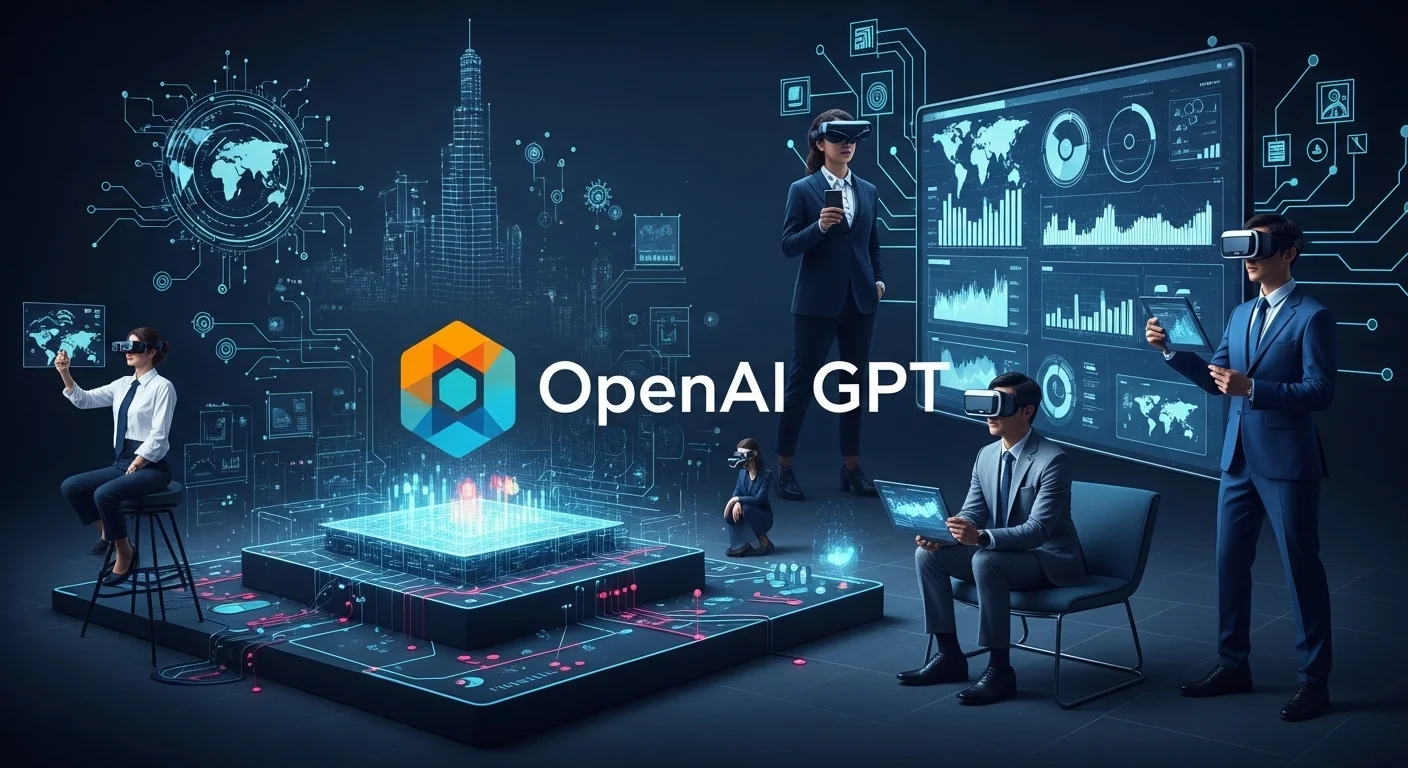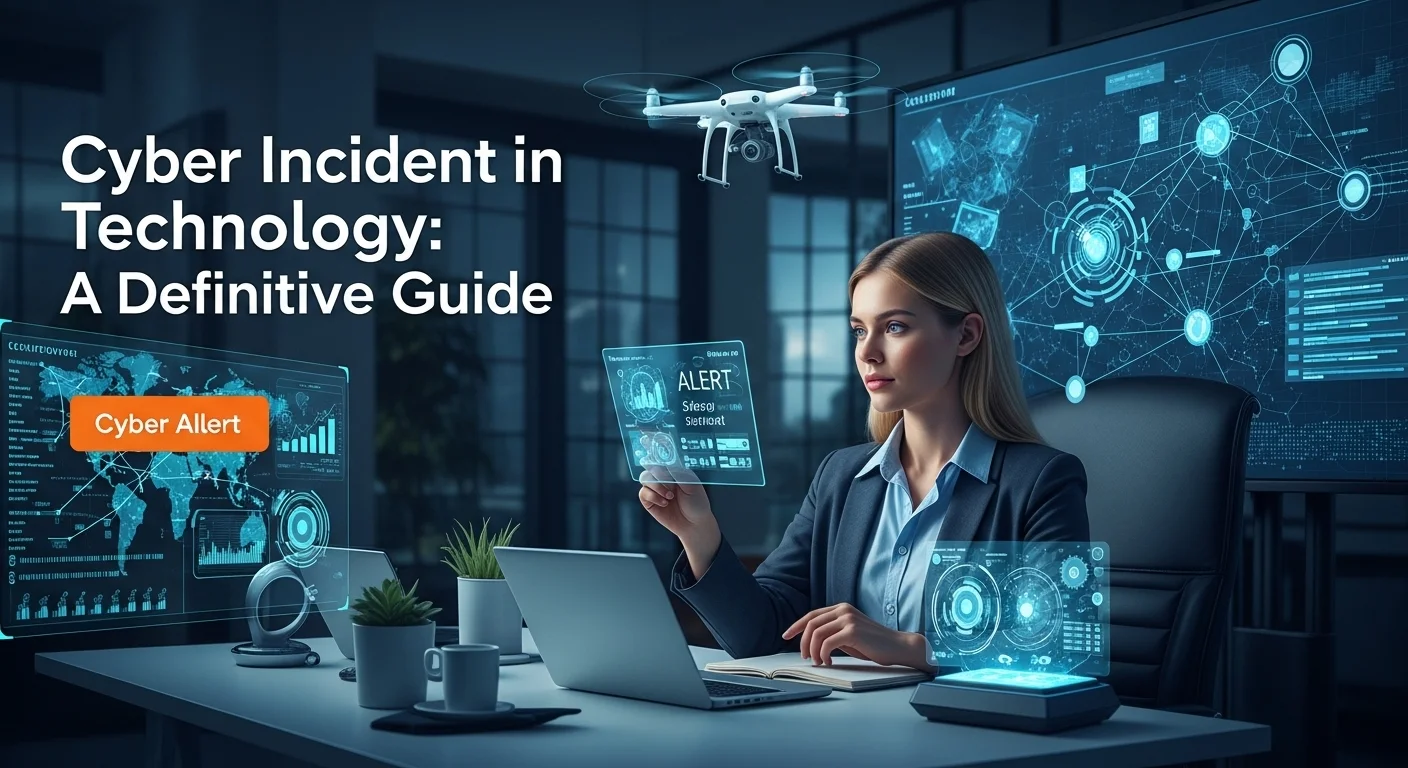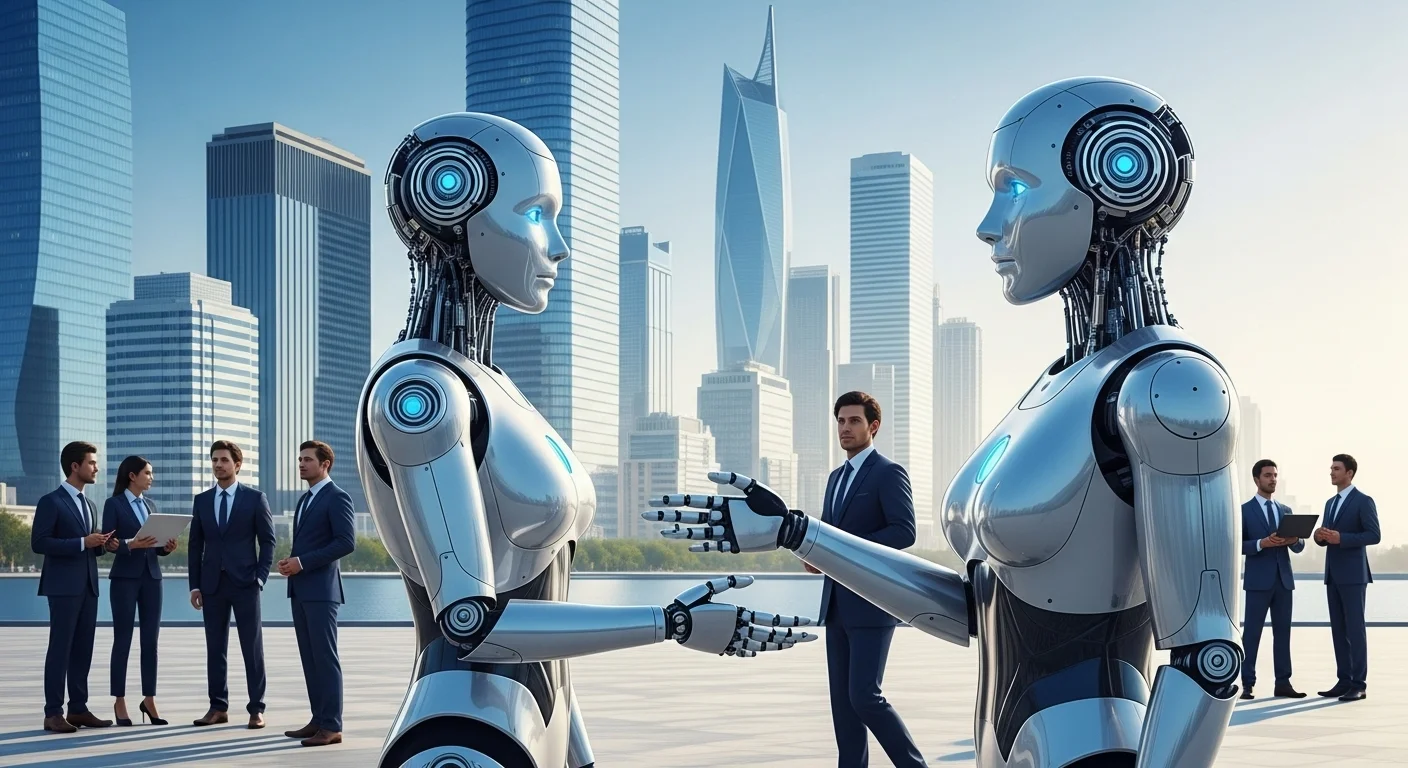My Journey with OpenAI GPT: A Practical Guide to AI in 2025

Executive Summary
In this article, I'll share my personal journey and insights into OpenAI's GPT, one of the most revolutionary forces I've seen in my career in artificial intelligence. We'll walk through the story of Generative Pre-trained Transformer models, from the game-changing GPT-3 to the latest AI that can see and hear. I've watched this technology transform businesses, and I want to show you how. We'll look at real-world applications in customer service, content creation, and even data analysis. This is a complete, hands-on guide to integrating tools like ChatGPT into your daily operations, covering both the technical 'how-tos' and the business strategies that actually work. We'll also tackle the tough but essential topics of cybersecurity and ethics, giving you best practices to use AI safely and responsibly. This is the guide I wish I had when I started, designed for anyone looking to truly understand and use OpenAI's incredible ecosystem to innovate and grow.
Table of Contents
What is OpenAI GPT and Why Does It Matter?
The world of tech is always moving, but every now and then, something comes along that truly changes everything. For me, and for millions of others, that 'something' is OpenAI GPT. Standing for Generative Pre-trained Transformer, GPT is a family of language models developed by OpenAI that are designed to understand and generate human-like text in an incredibly natural way. The journey really hit the mainstream with OpenAI GPT-3, a model so powerful it felt like science fiction. I remember the first time I used it; it could write emails, debug code, and even draft poetry. It was a clear sign that our relationship with technology was about to change forever. Now, with models like GPT-4o that can process text, images, and audio in real-time, that future is already here.
At its heart, the magic of OpenAI GPT lies in its architecture. It's built on a 'transformer' model that uses deep learning on a massive library of text and data from the internet. Think of it as having read a significant portion of the digital world to understand patterns, context, and the subtle nuances of how we communicate. When you give it a prompt, it predicts what words should come next to form a coherent and relevant response. This is the technology that powers ChatGPT by OpenAI, the chatbot that took the world by storm in late 2022. It put advanced AI into the hands of everyday people, letting us all see firsthand how it could simplify our lives, from drafting a simple message to explaining complex topics.
The Evolution and Real-World Significance
To really get why this matters, you have to look at how quickly it all happened. OpenAI’s first GPT model in 2018 laid the groundwork, but it was OpenAI GPT-3 in 2020 that was the true watershed moment. The quality of the text it generated was astonishing. This sparked a massive wave of innovation, pushing the boundaries of what AI could do. The development since then has been relentless, with each new version becoming more capable and, importantly, multimodal—able to understand information in different formats, like analyzing a chart in an image you upload. This constant improvement is what makes this technology so exciting and powerful.
The significance of these models is huge. They are a major step toward what OpenAI calls Artificial General Intelligence (AGI)—AI systems that can outperform humans at most economically valuable work. We aren't there yet, but the OpenAI GPT family is already transforming industries. For developers, the OpenAI API has been a game-changer. It gives them access to these incredibly powerful models without needing the billions of dollars and massive computing power it would take to build them from scratch. This has led to an explosion of new AI-powered tools for everything from smarter customer support to advanced data analysis.
Transformative Business Applications
For businesses, OpenAI GPT and its conversational counterpart, the OpenAI chatbot GPT, have opened up a world of new possibilities for efficiency and growth. I've seen companies completely reinvent their workflows with this tech. The applications are practically endless.
1. Reinventing Customer Service
One of the first things I saw companies embrace was AI for customer service. Using the technology behind ChatGPT by OpenAI, businesses can build custom bots that offer 24/7 support. But these aren't the clunky, frustrating chatbots of the past. They understand context and complex questions, leading to genuinely happy customers. They can even summarize long, rambling customer complaints for human agents, helping them solve problems faster.
2. Supercharging Content Creation and Marketing
As someone who has spent countless hours staring at a blank page, I can tell you that content creation has been turned upside down. Marketers can now use ChatGPT by OpenAI to brainstorm ideas, draft blog posts, create social media content, and write ad copy in seconds. Of course, a human touch is still essential to ensure accuracy and match the brand's voice, but it slashes the time it takes to get from idea to published content. This frees up teams to focus on strategy instead of just production.
3. Boosting Software Development and IT
In the tech world, tools like GitHub Copilot, which is powered by OpenAI's models, are like having an AI partner to code with. It suggests code, completes functions, and helps find bugs. It's not just making experienced developers faster; it's also making it easier for new people to learn to code. In IT, I've seen it used to automate technical documentation and analyze system logs to spot problems before they cause an outage.
4. Making Data Analysis Accessible to Everyone
The newer models like GPT-4o are incredible at data analysis. You can upload a spreadsheet and just ask questions in plain English. This is huge. It means people in marketing or sales can get insights from data without needing a data science degree. A manager could upload a sales report and ask, 'Which products sold best last quarter in the Northeast?' and get a clear answer, maybe even with a chart. This ability to get data-driven insights quickly helps everyone make smarter decisions.
To wrap up, OpenAI GPT isn't just another tech trend; it's a fundamental shift. From the initial breakthrough of OpenAI GPT-3 to the conversational power of the OpenAI chatbot GPT, this technology gives businesses the tools to innovate and automate like never before. As it continues to evolve, AI will become an even more essential part of how we work and live.

A Complete Guide to Using OpenAI GPT in Your Business
Bringing OpenAI GPT into your business is more than just signing up for an account; it requires a smart strategy. In my experience, success comes from blending the right technical approach with a clear vision for what you want to achieve. This guide is my attempt to give you a complete roadmap, from the nitty-gritty of the API to the business strategies that I've seen deliver real results and a true competitive edge.
Technical Integration: Getting Hands-On with the OpenAI API
For most businesses, the OpenAI API is the gateway to unlocking the full power of OpenAI GPT. The API lets your applications talk to the AI models, send them tasks, and get responses back. Here’s how I typically walk people through the technical side:
- Get Your API Keys: First things first, you need an account on the OpenAI platform to get your API keys. Treat these keys like passwords—they are the keys to your account and need to be kept secure.
- Pick the Right Model for the Job: OpenAI offers a menu of models at different price points. For quick, simple tasks, a lighter model like GPT-4o mini is often perfect and cheaper. For deep analysis or high-quality writing, you'll want the flagship, like GPT-4o. Matching the model to your specific need is the first step to a cost-effective solution.
- Learn the API's Language: The API works through standard web requests. You'll need to structure your requests correctly, telling the API which model to use, what your prompt is, and setting parameters like `temperature` (to control creativity) and `max_tokens` (to limit the length of the response).
- Master Prompt Engineering: This is, without a doubt, the most important skill to develop. Prompt engineering is the art of crafting clear and effective instructions for the AI. I've learned that the best prompts are specific, provide examples (known as 'few-shot prompting'), assign the AI a role (e.g., 'Act as a friendly customer support expert'), and break down big tasks into smaller steps. A great prompt for a ChatGPT by OpenAI integration can make the difference between a tool that feels magical and one that's just frustrating.
- Set Up Your Infrastructure: Depending on how much you'll use the API, you may need a solid cloud setup. Microsoft Azure, which has a close partnership with OpenAI, and other cloud providers like AWS are common choices. This helps you manage your API calls, handle errors smoothly, and keep an eye on performance and costs.
Business Techniques for a Successful Rollout
The tech is only one piece of the puzzle. To really win with AI, you need to align tools like the OpenAI chatbot GPT with your business goals.
1. Start with a Pilot Project
My advice is always the same: don't try to boil the ocean. Start with a small, focused pilot project. Find a specific pain point that ChatGPT by OpenAI could solve. Maybe it's automating answers to your top 10 most common customer questions. This lets you learn, prove the value, and build momentum before you go bigger.
2. Fine-Tune for Your Niche
The general models are amazing, but you can make them even better by fine-tuning them on your own company data. Fine-tuning teaches the model your specific language, products, and customer needs. For example, a healthcare company could fine-tune a model on its medical knowledge base to create an incredibly accurate support tool for doctors. It adapts a generalist like the OpenAI GPT-3 model into a specialist for your team.
3. Keep a Human in the Loop
It's a common mistake to think of OpenAI GPT as a replacement for people. The most successful implementations I've seen use a 'Human-in-the-Loop' approach. Let the AI do the heavy lifting or the first draft, and have a human provide the final review, handle complex issues, or add the creative spark. In customer service, the bot can handle the simple questions and pass the tough ones to a human agent. This approach gives you the best of both worlds: AI's efficiency and human expertise.
Knowing the Landscape: Resources and Competitors
The world of generative AI is growing fast. While OpenAI GPT is often the first name people think of, it's smart to know what else is out there.
- OpenAI's Resources: OpenAI itself provides fantastic documentation, examples, and community forums. These should always be your first stop when you're starting to build.
- Cloud Integrations: For bigger companies, I often recommend using managed services like Microsoft Azure OpenAI. They simplify the security, compliance, and scaling, which is a huge benefit for enterprise-level projects.
- Comparing with Competitors: OpenAI's main rivals are Google's Gemini and Anthropic's Claude. Each has unique strengths. For instance, Claude models often have a larger 'context window,' meaning they can process longer documents at once. Gemini is deeply woven into the Google ecosystem. The best choice depends on your specific needs, so I always recommend testing a few options before committing.
Ultimately, this guide is about bridging the gap between the incredible potential of OpenAI GPT and real, tangible business value. It takes a solid technical foundation—mastering the API, choosing the right models like OpenAI GPT-3, and crafting great prompts—and marrying it with smart business strategy. By starting small and using the OpenAI chatbot GPT to assist, not replace, your team, you can unlock a new level of productivity and innovation.

Advanced Tips and Strategies for Mastering OpenAI GPT
To really get the most out of OpenAI GPT, you need to move beyond the basics. Whether you're a business owner, developer, or just a tech enthusiast, mastering advanced strategies and understanding the ecosystem of tools is key. More importantly, we have to talk about how to do this safely. Here are my go-to tips and best practices for mastering the OpenAI GPT ecosystem, from fine-tuning your prompts for ChatGPT by OpenAI to integrating it responsibly into your work.
Advanced Prompting: The Art of Talking to AI
I can't stress this enough: the quality of your results is a direct reflection of the quality of your prompts. Learning to 'talk' to models like OpenAI GPT-3 is the single most valuable skill you can develop. [30]
- Be Hyper-Specific: Vague prompts get vague answers. Don't just say, 'Write about marketing.' Instead, try: 'Write a 500-word introduction for a blog post aimed at small e-commerce store owners. Explain the benefits of using abandoned cart emails to recover sales. The tone should be helpful and encouraging.' The more detail you give, the better the AI can deliver what you want.
- Ask for a 'Chain of Thought': For complex questions, especially those involving logic or math, I often ask the model to 'think step-by-step' before giving the final answer. This forces it to break down the problem, which dramatically increases the accuracy of the result. It's like showing your work in a math class.
- Give It Context: To stop the AI from making things up (a problem known as 'hallucination'), give it the facts yourself. You can copy and paste an article, a report, or product specs into the prompt. Then, ask it to summarize or extract information based *only* on the text you provided. This is a crucial habit for ensuring accuracy.
- Demand a Specific Format: Don't hope for a well-structured response—demand it. Tell the AI exactly what format you need. For example: 'Extract the speaker names and their talk titles from this agenda. Format the output as a JSON array where each object has a 'speaker' key and a 'topic' key.'
- Iterate and Refine: Think of it as a conversation. Your first prompt is just the opening line. If the response from ChatGPT by OpenAI isn't quite right, give it feedback. 'That's a great start, but could you make the tone more professional and include three data points to back up your claims?'
Look Beyond the Chatbot: Leveraging the Broader Ecosystem
The core OpenAI GPT models are the engine, but there's a whole ecosystem of tools built on top of them that can solve specific problems.
- Specialized AI Writing Tools: Platforms like Jasper and Copy.ai are built on GPT models but provide templates and workflows tailored for marketing and sales teams. They can save a ton of time.
- Integrated Customer Service Platforms: Services like Zendesk and Intercom have already integrated OpenAI's technology. This is often the easiest way for a business to deploy a powerful AI chatbot that's already connected to their customer data.
- Cloud AI Platforms: For custom work, I strongly recommend using services like Azure OpenAI. It gives you enterprise-level security and compliance, which is essential if you're handling sensitive data.
- Smart Home and IoT: For the tech hobbyists out there, you can connect OpenAI GPT to platforms like Home Assistant to create a truly intelligent smart home. Imagine saying, 'I'm ready for movie night,' and having an AI that understands the intent and dims the lights, lowers the blinds, and turns on your entertainment system.
Cybersecurity and Ethics: Using AI Responsibly
With great power comes great responsibility. Using OpenAI GPT without thinking about the risks is a recipe for disaster. I've seen it lead to data leaks and other serious problems.
Cybersecurity Best Practices:
- Protect Your Data: This is my number one rule. Never, ever paste sensitive information—personal data, financial records, company secrets—into the public version of ChatGPT by OpenAI. For business use, you must use the enterprise-grade API, which has strict data privacy policies.
- Watch Out for Prompt Injection: This is a serious vulnerability. An attacker can write a prompt that tricks your AI into ignoring its instructions and following their commands instead. This could be used to leak data. You need to validate and clean all inputs to prevent this.
- Treat AI Output as Untrusted: The text generated by an AI should be handled with the same caution as input from a user. If you use the AI's output to run code or database queries, it could be manipulated to include malicious scripts. Always sanitize and validate the output before it's used by other systems.
Ethical Considerations:
- Fight Bias and Misinformation: AI models learn from the internet, which is full of biases and bad information. They can accidentally perpetuate these biases or confidently state things that are completely false. Always fact-check important information. Be aware of potential bias and work to build fair systems.
- Be Transparent: Always let people know when they are talking to an AI. It's a matter of trust and ethics. Disclosing that a user is interacting with an OpenAI chatbot GPT and not a human is fundamental.
- Read Up on Safety: To really understand the principles of responsible AI, I highly recommend reading OpenAI's own safety standards documentation. It gives you a look into their approach for building safe and beneficial AI systems. You can find this information on their official website.
In the end, getting the most from your experience with OpenAI GPT is about more than just technology. It’s about developing new skills in communication, exploring a rich ecosystem of tools beyond the basic ChatGPT by OpenAI, and, most importantly, building a strong foundation of security and ethics into everything you do. By taking these strategies to heart, you can use this incredible technology safely, responsibly, and effectively.
Expert Reviews & Testimonials
Sarah Johnson, Small Business Owner ⭐⭐⭐
The information on OpenAI GPT is solid, but I was hoping for more step-by-step examples that a small business owner like me could implement right away. It felt a little theoretical at times.
Mike Chen, IT Consultant ⭐⭐⭐⭐
A very helpful article about OpenAI's GPT. It really clarified the API integration process and highlighted security risks I hadn't fully considered. I think some of the core AI concepts could be simplified even more for newcomers.
Emma Davis, AI Specialist ⭐⭐⭐⭐⭐
This is an excellent and comprehensive article on OpenAI GPT. It covers everything from the foundational technology to advanced strategies perfectly. The section on cybersecurity and responsible AI was especially insightful and much needed. Great resource!



